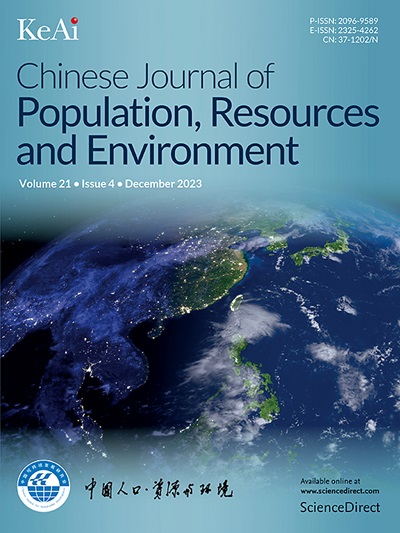通过机器学习识别城市可持续发展能力中的影响因素并确定关键问题的特征
IF 4.8
4区 环境科学与生态学
Q2 ENVIRONMENTAL STUDIES
Chinese Journal of Population Resources and Environment
Pub Date : 2024-09-01
DOI:10.1016/j.cjpre.2024.09.008
引用次数: 0
摘要
为响应联合国可持续发展目标和中国 "双碳 "目标(DCGs,即 "碳峰值和碳中和 "目标),本文从中国可持续发展议程创新示范区(IDZSDAs)建设的角度出发,结合碳排放相关指标,构建了城市可持续发展能力(USDC)综合评估体系。通过该评估系统获得城市可持续发展能力评估结果后,提出了一种基于机器学习的最小绝对收缩和选择操作器(LASSO)回归与随机森林(RF)相结合的方法,用于识别影响因素和表征关键问题。结合耦合协调度(CCD)分析,该研究进一步总结了城市可持续发展的系统模式和未来方向。对 2015 至 2022 年 IDZSDA 的案例研究表明(1)基于机器学习和 CCD 模型的组合识别方法有效量化了城市可持续发展过程中的影响因素和关键问题;(2)LASSO-RF 组合模型识别的影响因素和关键子系统之间的对应关系与各城市的发展状况基本一致;(3)基于机器学习的组合识别方法具有可扩展性和动态性。它使决策者能够根据实际的城市发展需求准确识别影响因素,并对关键问题进行定性。本文章由计算机程序翻译,如有差异,请以英文原文为准。
Identifying influencing factors and characterizing key issues in urban sustainable development capacity through machine learning
In response to the United Nations Sustainable Development Goals and China’s “Dual Carbon” Goals (DCGs means the goals of “Carbon Peak and carbon neutrality”), this paper from the perspective of the construction of China’s Innovation Demonstration Zones for Sustainable Development Agenda (IDZSDAs), combines carbon emission-related metrics to construct a comprehensive assessment system for Urban Sustainable Development Capacity (USDC). After obtaining USDC assessment results through the assessment system, an approach combining Least Absolute Shrinkage and Selection Operator (LASSO) regression and Random Forest (RF) based on machine learning is proposed for identifying influencing factors and characterizing key issues. Combining Coupling Coordination Degree (CCD) analysis, the study further summarizes the systemic patterns and future directions of urban sustainable development. A case study on the IDZSDAs from 2015 to 2022 reveals that: (1) the combined identification method based on machine learning and CCD models effectively quantifies influencing factors and key issues in the urban sustainable development process; (2) the correspondence between influencing factors and key subsystems identified by the LASSO-RF combination model is generally consistent with the development situations in various cities; and (3) the machine learning-based combined recognition method is scalable and dynamic. It enables decision-makers to accurately identify influencing factors and characterize key issues based on actual urban development needs.
求助全文
通过发布文献求助,成功后即可免费获取论文全文。
去求助
来源期刊

Chinese Journal of Population Resources and Environment
ENVIRONMENTAL STUDIES-
CiteScore
4.30
自引率
1.10%
发文量
791
审稿时长
79 days
期刊介绍:
The Chinese Journal of Population, Resources and Environment (CJPRE) is a peer-reviewed international academic journal that publishes original research in the fields of economic, population, resource, and environment studies as they relate to sustainable development. The journal aims to address and evaluate theoretical frameworks, capability building initiatives, strategic goals, ethical values, empirical research, methodologies, and techniques in the field. CJPRE began publication in 1992 and is sponsored by the Chinese Society for Sustainable Development (CSSD), the Research Center for Sustainable Development of Shandong Province, the Administrative Center for China's Agenda 21 (ACCA21), and Shandong Normal University. The Chinese title of the journal was inscribed by the former Chinese leader, Mr. Deng Xiaoping. Initially focused on China's advances in sustainable development, CJPRE now also highlights global developments from both developed and developing countries.
 求助内容:
求助内容: 应助结果提醒方式:
应助结果提醒方式:


